Joyful bustle in Yen Tinh
(Baonghean) -It has been a long time since I last returned to Yen Tinh - one of the 6 inner communes of Tuong Duong district. The long, leaf-covered trail upstream of Cha Ha stream in the past has now become an asphalt road running all the way to the distant mountains in the vast forest, as if inviting people to walk.
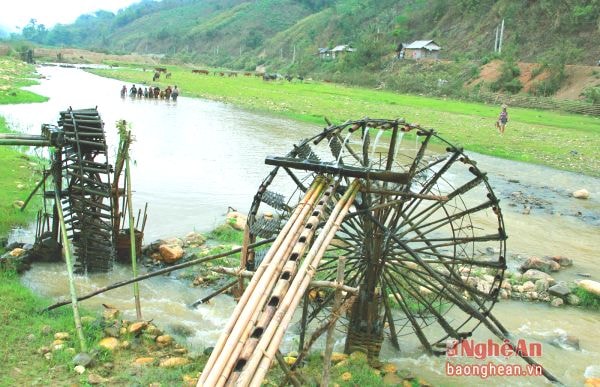 |
| Cha Ha River has returned to peace after the gold "fever". Photo: Ho Phuong |
Still the villages clustered in the narrow valleys of Cha Ha, but now Yen Tinh has changed a lot. Cha Ha has been an important waterway of Yen Tinh for many generations, boats and motorboats have helped the villagers transport goods to the lowlands.
The countryside in the deep mountains has brightened up when the industrial light is present in daily life. The echoes of wood sawing machines, rice husking machines, car horns, and motorbikes can be heard bustling in the mountain valleys. Groups of people walking with heavy loads on their shoulders, but now they know to stop for a moment when the mobile phone in the brocade bag rings with music, signaling a call from a loved one.
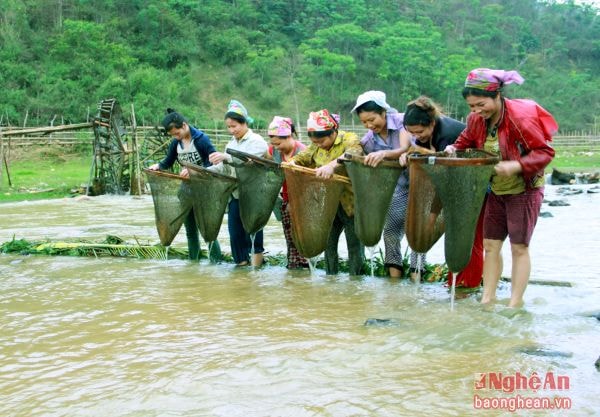 |
| Thai people catch fish on Cha Ha river, passing through Yen Na commune. |
Yen Tinh basically has electricity grid, telecommunication relay stations, schools, medical stations, and well-built offices. But through working sessions with commune leaders, I learned that it is currently the poorest commune in the district, with a poverty rate of up to 74%. With 1,000 households in 9 Thai villages scattered over an area of 15,614 hectares of rugged mountains and rivers, some villages are up to 3 hours walk from the center. People's lives mainly depend on upland rice cultivation and forestry and mineral exploitation. Crops depend on nature, so people's food supply is very precarious.
In the years of crop failure, the government subsidized tens of tons of rice, salt, corn, rice seeds, fish seeds and lighting oil for households. Flash floods and flash floods come every year, and the consequences of illegal gold mining by some businesses in the area and social evils such as drug trafficking and use have made Yen Tinh even more difficult.
Commune Chairman Vi Van Khiem confided to us: “The big flood on September 14th, although we had planned in advance, we still couldn’t handle it. The flood came in the middle of the night, the middle school and some households of Hat, Vang Cuom, Pa Ty villages were submerged in the flood. Through the flood, we realized the damage caused by the encroachment of upstream forests and the indiscriminate exploitation of forest products and minerals. Everything that happens has a cause and then there are solutions to overcome it. Just like if Yen Tinh wants to escape poverty, we must find the strengths of the land and awaken the potential of each household when they know how to break free from old production and livestock farming methods to produce goods according to market demand…”
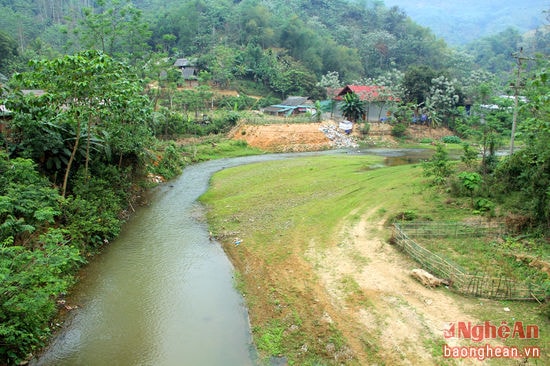 |
| This place (Cap Chang village) used to be a gold mining workshop. |
Yes, people have lived in the mountains and forests for generations with countless difficulties, they are used to enduring poverty from generation to generation leading to acceptance as a natural thing. To escape the old mindset, there must be sustainable poverty eradication factors and economic development right on the land of their homeland.
I still remember in 2002, the delegation of artists from the Provincial Association of Literature and Arts went on a field trip to Tuong Duong district. We went to Nga My commune to visit the irrigation project in Chon village funded by Oxpam from the Kingdom of Belgium with over 3 billion VND. Thanks to this project, Nga My commune has a 100-hectare rice field.
Mr. Lu Kim Duyen, who was the Secretary of the District Party Committee at that time, told us: “It is not that the leaders and people do not know about the potential of converting flat land into rice fields, which will reduce hundreds of hectares of sloping fields and each sao of wet rice with two crops per year will yield 10 times more than upland rice. Knowing this, we are helpless because it requires billions of dong, and the people are still poor. But when there is irrigation, there are still many difficulties. Before, people were mobilized to go down the mountain, now they are mobilized to move their houses up the hill, and then transfer new farming science and technology. Even from “holding hands to show how to do things” from the custom of burning fields, making holes to sow seeds to plowing, planting seedlings, planting in straight rows, fertilizing and preventing pests and diseases for rice plants is also a strange thing for the villagers…”.
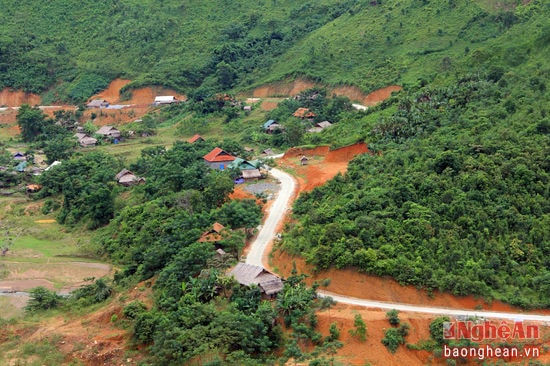 |
| Yen Tinh and Huu Khuong roads today. |
On the same trip, our group visited Vang Cuom village, Yen Tinh commune. At that time, there were some households with herds of over 50 cows. But looking at the villagers, they still grazed naturally, all year round in the forest, only when they missed salting did the cows return to the village. When the cattle were sick, died in large numbers from hunger and cold, combined with difficult transportation, and the products were forced down to 1/3 of the price in the district market by traders, it made people discouraged and no longer enthusiastic about raising large-scale cattle.
Now it is different, when the infrastructure has gradually been completed, the transfer of crop and livestock techniques has reached every household, product output is clear, with the close direction of leaders at all levels and the effective implementation of projects 135, 134... and Resolution 30a creating conditions for people to develop the economy, culture, education... to successfully build new rural areas.
The commune is promoting its strengths in raising large livestock, planting raw material forests of acacia, melaleuca, and mahogany. Protecting upstream forests and allocating forest land to each household for care and protection. People have zoned off grazing areas for livestock, built industrial-oriented livestock barns, focused on veterinary work, and converted crops and livestock for high productivity. The commune has a herd of over 3,000 buffaloes and cows, 2,000 pigs, planted forests outside Resolution 30a on over 70 hectares, and then green vegetables, elephant grass...
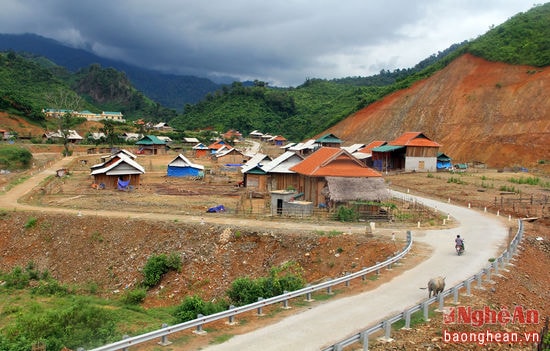 |
| Na Cang resettlement area. |
During our stay in Yen Tinh, we visited some well-off households of farm owners Luong Van Quang, Vi Van Thuy, Vi Van May... in Canh Toong and Cap Chang villages. They all have the same VACR model, growing upland rice, raising cattle, pigs, chickens, fish ponds and planting raw material forests. Every household has a herd of over 30 cows. I asked about the output of their products, they happily said: Now it is convenient, cars can go all the way to the commune and village to buy products, the only worry is that the villagers cannot produce many goods.
The night in the mountainous region is really cold. The wind from the forests, the rocky mountains pouring down the valleys, like knocking on the doors of each peaceful stilt house in the mist. Thoughts of a land keep calling to me. The Cha Ha River flows tirelessly in the night, the sound of clear and blue waves is very clear. Just thinking about some classrooms here still with bamboo and thatch makes me feel sad. Knowing that the commune has high school students, university students, my heart is filled with new joys. Yes, tomorrow Yen Tinh will have new generations of highly educated citizens, they have inherited the virtues of courage, diligence, and hard work passed down from their ancestors. They are people of the new era in the new revolutionary period...
Vo Van Vinh
Image:Ho Phuong

.jpg)
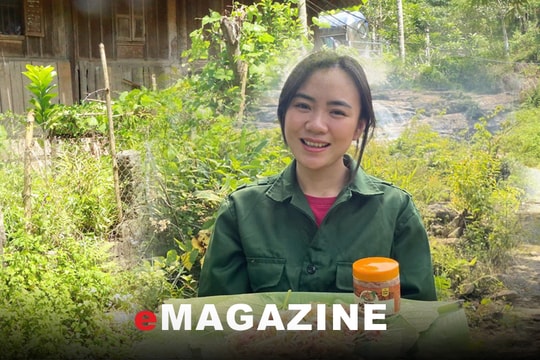
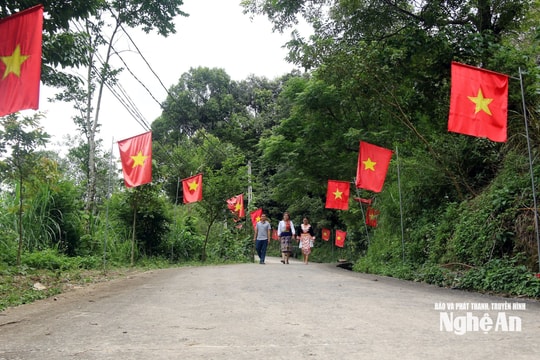
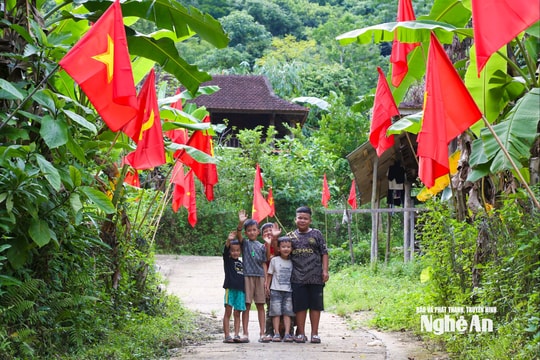
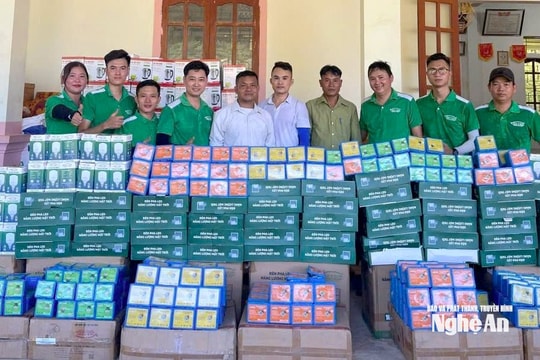
.jpg)

